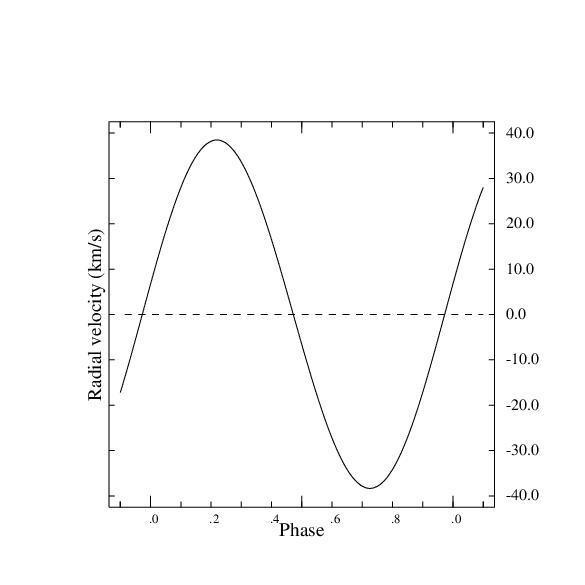Basic data (System:27)
| C1900.0 | : | 00301-0409
|
|---|
| C2000.0 | : | 003514879-03353425
|
|---|
| Comp. | : | A
|
|---|
| Magn. | : | 5.20(V)
|
|---|
| Spect. | : | F8V
|
|---|
Identifiers:
| ADS 490 | BD -04 62 | Flamsteed 13 Cet | GAIADR2 2528433919872925312
|
| GAIADR3 2528433919872925312 | GCVS BU Cet | GJ 23 | HD 3196
|
| HIP 2762 | HR 142
|
Orbit
| Element | | Value | Std. dev.
|
|---|
| Period (d.) | : | 2.0819 |
|
|---|
| Periastron time (xJD-2,400,000.0) | : | 24548.60 |
|
|---|
| Reference T0/epoch | : | JD
|
|---|
| Eccentricity | : | 0.01 |
|
|---|
| omega primary (deg.) | : | 280. |
|
|---|
| K1 (km/s) | : | 38.4 |
|
|---|
| K2 (km/s) | : | |
|
|---|
| V0 (km/s) | : | |
|
|---|
| sigma residuals primary | : |
|
|---|
| sigma residuals secondary | : |
|
|---|
| #RV primary | : |
|
|---|
| #RV secondary | : |
|
|---|
| Grade | : | 3.0
|
|---|
| Contributor | : | DAO
|
|---|
| Status | : | PUB
|
|---|
| Bibcode | : | 1933ApJ....78..225L
|
|---|
|
|---|
|
|
|---|
| Derived quantities (on the fly, from the above quantities) |
|---|
|
|---|
|
|
|---|
| a1sini (km) | : | 1.09927e+06 | 0
|
|---|
| f(m) (sol.mass) | : | 0.0122589 | 0
|
|---|
Note
13 Cet (A.D.S. 490) is a well-known triple system. Luyten estimates V0 for
the whole system is 11.0 km/s. Earlier investigations are by J.S.
Paraskevopoulos (Astrophys. J., 52, 110, 1920) and A. Pogo (Astrophys. J.,
68, 116, 1938). A visual orbit for the long-period system (P=6.91y) was
derived by Aitken (Publ. Lick Obs., 12, 5, 1914) and rediscussed by Luyten
in the paper cited in the Catalogue. The long-period system has not been
included in the Catalogue since there seems to have been no direct
spectroscopic determination of K, the semiamplitude of the spectroscopic
binary about the centre of mass of the whole system. There are discrepancies
in the orbital elements from epoch to epoch, probably indicating that the
two orbital motions have not yet been completely disentangled, although
there may also be physical perturbations. The set of elements given here
refers to the interval 1923-28. G. Gatewood and S. Sofia (Publ. Astron. Soc.
Pacific, 88, 50, 1976) find that the astrometric data suggest that the
principal components of the system are overluminous for their masses.
Plot

Encapsulated PostScript file
T. Merle

